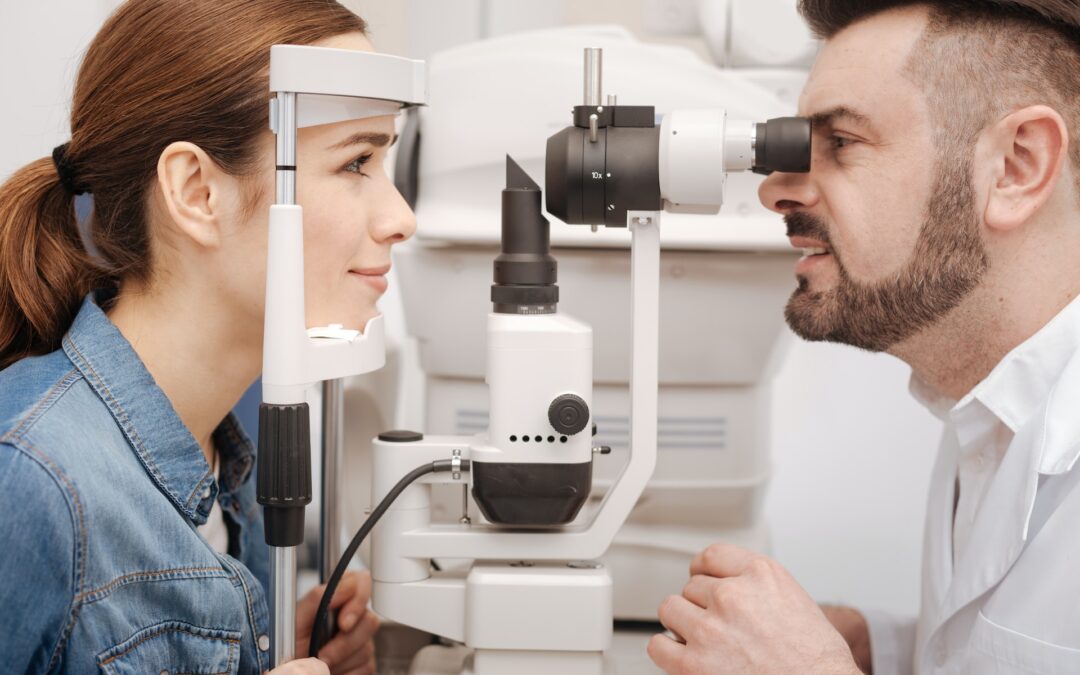Have you ever experienced that annoying itchy feeling in your eyes or struggled with blurry vision while trying to read your favorite book? Well, you’re not alone. Eye problems are more common than you’d think, and they can affect anyone, regardless of age or lifestyle. That’s why we’re here to give you the lowdown on the most common eye issues you should definitely keep an eye on. Grab your glasses, and let’s get started!
1. Refractive Errors
Refractive errors are the most common type of eye problem, affecting millions of people worldwide. These errors occur when the shape of the eye prevents light from focusing properly on the retina. There are four types of refractive errors:
a) Myopia (nearsightedness) – difficulty seeing objects far away
b) Hyperopia (farsightedness) – difficulty seeing objects up close
c) Astigmatism – distorted vision caused by an irregularly shaped cornea or lens
d) Presbyopia – age-related farsightedness that affects people over 40
- Symptoms: Blurry vision, squinting, eye strain, headaches, and difficulty reading or seeing distant objects.
- Prevention/Management: Regular eye exams can help detect and correct refractive errors with prescription eyeglasses, contact lenses, or refractive surgery.
2. Cataracts
Cataracts are a clouding of the eye’s natural lens, which affects your vision. They are most commonly associated with aging, but can also be caused by other factors such as diabetes, smoking, and exposure to sunlight.
- Symptoms: Cloudy or blurry vision, difficulty seeing at night, sensitivity to light and glare, seeing halos around lights, and fading of colors.
- Prevention/Management: Wearing sunglasses that block UV rays, maintaining a healthy diet, and not smoking can help prevent cataracts. Treatment for cataracts includes surgical removal of the clouded lens and replacement with an artificial one.
3. Age-Related Macular Degeneration (AMD)
AMD is a common eye condition that affects the macula, the part of the retina responsible for central vision. It is a leading cause of vision loss in individuals over 50 years old. There are two types of AMD: dry (more common) and wet (more severe).
- Symptoms: Blurry or distorted central vision, difficulty recognizing faces, and trouble seeing fine details.
- Prevention/Management: Regular eye exams can help detect AMD early. While there is no cure for dry AMD, certain vitamins and minerals may help slow its progression. Treatment for wet AMD includes injections, laser therapy, or photodynamic therapy.
4. Glaucoma
Glaucoma is a group of eye conditions that damage the optic nerve, which is responsible for transmitting visual information from the eye to the brain. It is often associated with a buildup of pressure inside the eye, although not always.
- Symptoms: In its early stages, glaucoma may not have any noticeable symptoms. As it progresses, it can cause blind spots in your peripheral vision, tunnel vision, and eventually total vision loss.
- Prevention/Management: Regular eye exams, especially for those at higher risk (African Americans, individuals over 60, and those with a family history), can help detect glaucoma early. Treatment options include eye drops, oral medications, laser treatment, or surgery to reduce eye pressure.
5. Dry Eye Syndrome
Dry eye syndrome occurs when your eyes don’t produce enough tears or produce poor-quality tears, leading to discomfort and potential vision problems.
- Symptoms: Burning or stinging sensation, redness, watery eyes, sensitivity to light, and a feeling of something being stuck in the eye.
- Prevention/Management: Using artificial tears, avoiding exposure to wind or dry environments, and taking breaks during activities that strain the eyes (such as computer work) can help manage dry eye symptoms. Prescription medications may also be recommended by your eye doctor.
The Bottom Line
The key to maintaining good eye health and preventing vision loss is early detection and timely treatment of these common eye problems. Regular eye exams, a healthy lifestyle, and proper eye care can help protect your vision and ensure that you continue to enjoy the beauty of the world around you. If you experience any changes in your vision or eye-related discomfort, do not hesitate to consult an eye care professional.
So if you’re looking for an urgent care clinic in New Orleans, LA, look no further than In & Out Urgent Care Clinic. Our team of experienced and certified medical professionals is here to provide you with the highest quality of care in a warm, welcoming environment.

